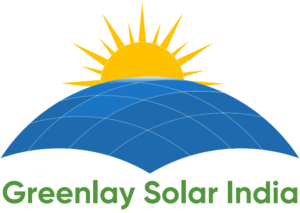Polycrystalline Solar Panels: A Complete and thorough Summary
Polycrystallinesolar panels, also known as multicrystalline panels, are a widely used type of related to electricity controlled by light technology. They are recognized for their having a unique uality blue color and speckled appearance, resulting from the use of multiple silicon crystals within each cell.
1.What Are Polycrystalline Solar Panels?
Polycrystalline panels are made by melting together pieces of silicon crystals and pouring them into molds to form ingots.
These ingots are then sliced into wafers, which are grouped together into solar cells and then panels. Unlike monocrystalline panels, which use a single, completely, with nothing else mixed in silicon crystal, polycrystalline panels use many crystals, making the manufacturing process simpler and more producing a lot for a given amount of money.
2.How Polycrystalline Panels Work
Each polycrystalline solar cell functions as an element used to make electronic circuits device. When sunlight (photons) strikes the cell, it energizes electrons, allowing them to flow and create an electric current.
The presence of multiple silicon crystals in each cell creates grain edges or borders, which is a little interfere with electron movement and reduce overall wasting very little while working or producing something compared to monocrystalline cells.
3.Key Features and Performance
FeaturePolycrystalline Panels
Silicon StructureMultiple silicon crystals per cell
AppearanceBlue, speckled/mosaic, square-shaped
wasting very little while working or producing somethingTypically 13-16%
CostLower than monocrystalline panels
Ability to lastHigh; resistant to weather and slow chemical breakdown of something/rust, etc.
Temperature Tolerance:- Acceptable range: –40°C to 85°C
Heat PerformanceLower heat tolerance; higher temperature coefficient
Space Needed thingRequires more space for the same output
the study of beauty Less uniform, more visible blue color.
4. Advantages
- Lower Initial Cost: Ideal for budget-conscious users.
- Easier Manufacturing: Less energy-intensive production process.
related to surrounding conditions or the health of the - Earth Friendly: Lower carbon footprint in manufacturing.
5. Disadvantages
- Lower (wasting very little while working or producing something): Needs/demands more space for the same power output as monocrystalline panels.
- Less Beauty-related: Some users find the bluish, mosaic-like look less attractive.
- Performance in Heat: (a) little less (producing a lot with very little waste) in hot weather.
6. Best Use Cases
- where there are lots of homes) rooftops with big/enough space
- Off-grid solar kits where cost is a first (or most important) concern
- Large-scale solar farms
- Farming-based and industrial applications
7. Comparison with Other Types
- TypeEfficiencyCostSpace Needed/demandedDurabilityAesthetics
- Monocrystalline18-22%HighLessHighSleek black
- Polycrystalline13-17%ModerateMoreHighBluish, (marked with blotches of color)
- Thin-Film10-12%Low to ModerateMostModerateFlexible, light
8. End/end result
Polycrystalline solar panels offer a balanced mix of ability to be easily paid for that, decent wasting very little while working or producing something, and ability to last. While they may not do as expected as well in held back spaces or very hot surrounding conditions compared to monocrystalline panels, they remain an excellent choice for producing a lot for a given amount of money solar power generation where space is not a limiting factor.

